| Signal Processing | |
| << TO BE UPDATED, PLEASE VISIT AGAIN >> | |
| Signal processing is the science that analyzes variable physical processes over time. Signal processing is divided into two categories, analog signal processing and digital signal processing. The term analogue is used to describe a waveform that is continuous over time and can take a continuous range of amplitude values [1]. | |
| Some projects in this field under my supervision are as follows: | |
| Artificial Intelligence for health applications | |
| This project describes the development of a detection system for the QRS complexity present in the electrocardiogram. The capture of electrocardiogram signal was achieved through electrodes with the help of an acquisition card. On the part of the signal processing and the graphical user interface were made by programming in Python. The technique used to detect the R peaks was the use of the Hilbert transform and adaptive thresholds [2]. | |
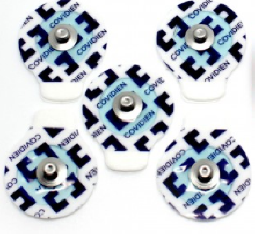 |
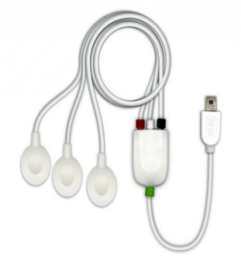 |
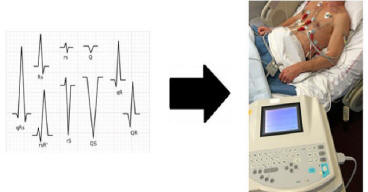 |
The QRS complex is of
great importance for the diagnosis of
cardiac anomalies, which
is why new algorithms and
mathematical models are
sought for its detection. In addition, the monitoring of the
ECG signal in people who
present these problems, through conventional
electrocardiograms, is limited because the person is
wired to the device and
lacks portability, preventing information from being
obtained when the person is doing
daily activities. |
| ECG monitoring [2] | |
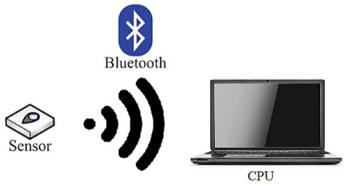 |
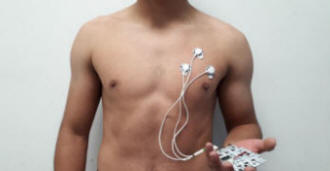 |
| data acquisition via Bluetooth [2] | Triangular placement of electrodes [2] |
|
Bsc. Thesis Student:Isaac De León Damas 131884 [1] |
|
| Development of a control system for an arm prosthesis | |
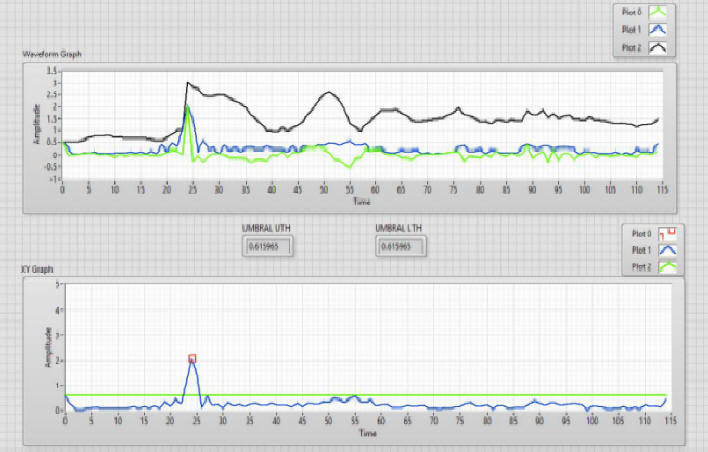 |
|
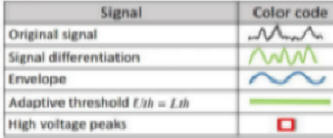 |
In the present project a control
system is developed by means of a
Human-Machine graphic interface to control an
integrated robotic arm prosthesis, which from myoelectric
signals emitted by the forearm of the user was possible to
manipulate. The Hilbert method allowed an analysis of the myoelectric signals in order to find the significant impulses for the system, which would indicate if there was a type of force emitted by the user. It was possible to determine the adaptive voltage threshold in the signal and based on the results obtained, the movement of the servomotors was enabled by the action of opening and closing the robotic hand prosthesis [3]. |
|
Bsc. Thesis Student: Laura Ivonne Figueroa 120744 [2] |
|
| References: | |
| [1] R. Rodriguez-Jorge, I De Leon-Damas, J Bila, J Skvor, Internet of things-assisted architecture for QRS complex detection in real time, Journal of Internet of Things, Vol 14 (2021), pp. 100395, Indexed in JCR, Impact Factor: 5.711, Q1 Elsevier. | |
| [2] R. Rodrguez-Jorge and J. Bila, Cardiac Arrhythmia Prediction by Adaptive Analysis via Bluetooth, MENDEL, Vol. 26, No. 2, pp. 29-38. DOI: https://doi.org/10.13164/mendel.2020.2.029. Indexed in Scopus. | |
| [3] Bachelor thesis: “Detection of the R peak in ECG signals obtained in real time by means of the single lead sensor,” by the student Valeria Vargas Morales, to get the title of Engineer in Mechatronics. Mechatronics Program. Autonomous University of Ciudad Juárez. Dec 2017. (Advisor: Dr. Ricardo Rodriguez Jorge). | |
| [4] Bachelor thesis: “Detection of QRS complexity in real time through Bluetooth communication,” by the student Isaac De Leon Damas, to get the title of Engineer in Mechatronics. Mechatronics Program. Autonomous University of Ciudad Juárez. Dec. 2018. (Advisor: Dr. Ricardo Rodriguez Jorge). | |
| [5] Bachelor Thesis: “Control of a robotic hand integrated by means of myoelectric signals,” by the student Laura Ivonne Figueroa Puebla, to get the title of Engineer in Mechatronics. Mechatronics Program. Autonomous University of Ciudad Juárez. Dec 2017. (Advisor: Dr. Ricardo Rodriguez Jorge). | |
| [6] Rodriguez Jorge, R., Bila, J., Mizera-Pietraszko, J., Loya Orduño, R. E., Martinez Garcia, E., & Torres Córdoba, R. (2017). Adaptive methodology for designing a predictive model of cardiac arrhythmia symptoms based on cubic neural unit. In Frontiers in Artificial Intelligence and Applications (Vol. 295, pp. 232–239). IOS Press. https://doi.org/10.3233/978-1-61499-773-3-232 | |
| [7] Rodriguez Jorge, R., García, E. M., Córdoba, R. T., Bila, J., & Mizera-Pietraszko, J. (2017). Adaptive Threshold, Wavelet and Hilbert Transform for QRS Detection in Electrocardiogram Signals (pp. 777–786). https://doi.org/10.1007/978-3-319-69835-9_73 | |
| [8] Herrera, José Elías Cancino, Ricardo Rodríguez Jorge, Osslan Osiris Vergara Villegas, Vianey Guadalupe Cruz Sánchez, Jiri Bila, Manuel de Jesús Nandayapa Alfaro, Israel U. Ponce, Ángel Israel Soto Marrufo, and Ángel Flores Abad. 2016. “Monitoring of Cardiac Arrhythmia Patterns by Adaptive Analysis.” In , 885–94. doi:10.1007/978-3-319-49109-7_86. | |
| [9] Bachelor thesis: “Implementation of a cubic neuronal unit for the detection of patterns and prediction of cardiac arrhythmias via wireless,” by the student Paola Alejandra Huerta Solis, in order to get the title of Engineer in Mechatronics. Mechatronics Program. Autonomous University of Ciudad Juárez. Dec. 2018. (Advisor: Dr. Ricardo Rodriguez Jorge). | |
| [10] Rodriguez Jorge, Ricardo; Bila, Jiri; Mizera-Pietraszko, Jolanta; Martinez-Garcia, Edgar A., Weight Adaptation Stability of Linear and Higher-Order Neural Units for Prediction Applications, Proceedings of the 11th International Conference MISSI 2018.(Web of Science, Procceddings Citation Index). | |
| [11] Rodríguez-Jorge, R.; De León-Damas, I.; Bila, J., Detection of the QRS Complexity in Real Time with Bluetooth Communication, Advances on P2P, Parallel, Grid, Cloud and Internet Computing. 3PGCIC 2020. Lecture Notes in Networks and Systems, vol 158. Springer, Cham. (Web of Science, Proceedings Citation Index). | |
| [12] R. Rodriguez-Jorge, I De Leon-Damas, J Bila, J Skvor, Internet of things-assisted architecture for QRS complex detection in real time, Journal of Internet of Things, Vol. 14 (2021), pp. 100395, Elsevier. | |
 |
Research Group |
 |
|
Mechatronics, Signal Processing, Control and Artificial Neural Networks |
||
| Department of
Information and communications technologies Technological Centre Ceit /“Researching Today, Creating the Future” |
||